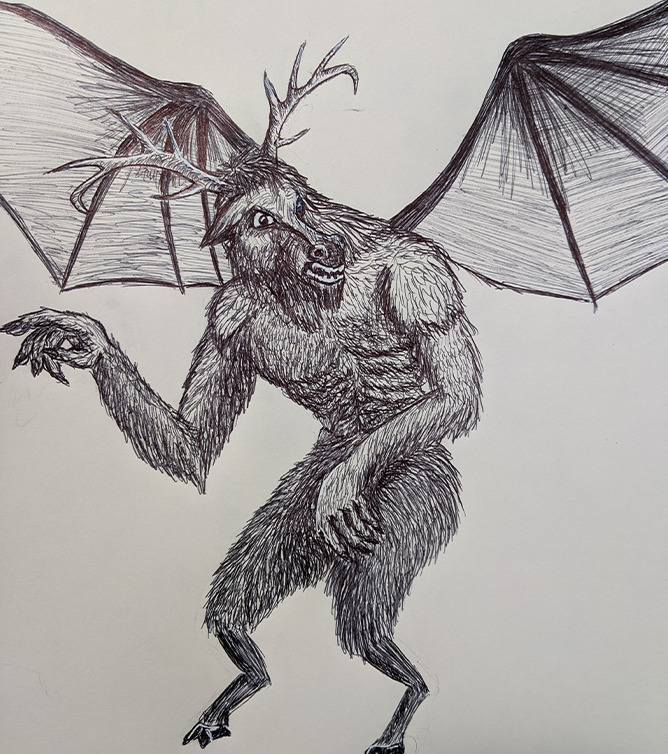Also known as the Leeds Devil,
The Jersey Devil legend traces back to the early 18th century in the Pine Barrens of New Jersey, USA. According to folklore, the Jersey Devil was born from the 13th child of Mother Leeds, cursed to transform into a creature of the night.
First reported sightings date back to the 18th century, with numerous subsequent sightings reported over the years. The Jersey Devil was even reportedly sighted by the brother of Napoleon Bonaparte (Joseph). Obviously he had no reason to be fame seeking or lie to increase his stature.
Physical Description:
- Variations: Descriptions vary, but common features include a horse-like head, bat-like wings, hooves, and a forked tail.
- Size: Reported to be around 3 to 4 feet tall, with a wingspan of 6 to 8 feet.
- Color: Often described as dark or black, blending into the shadows of the Pine Barrens.
Behaviors:
- Elusive: Known for its elusive nature, rarely seen by humans.
- Nocturnal: Primarily active at night, with sightings typically occurring during twilight hours.
- Aggressive: Some reports describe aggressive behavior, including attacking livestock and scaring travelers.
Abilities:
- Flight: Capable of flying swiftly and silently through the air.
- Shapeshifting: Legend suggests the ability to change its form at will, making it difficult to track or capture.
Preferred Habitat:
- Pine Barrens: Dense forests and marshes of the New Jersey Pine Barrens are its primary habitat.
- Isolation: Prefers remote, uninhabited areas away from human civilization.
Range of Sightings:
- New Jersey: Most sightings reported within the Pine Barrens region of New Jersey.
- Wider Region: Reports extend to neighboring states like Pennsylvania and Delaware, suggesting a wider range of potential sightings.
Likelihood of Existence Based on Similar Species:
- Cryptozoology: Some compare the Jersey Devil to other cryptids like Mothman or Chupacabra, which also lack concrete evidence but persist in local folklore.
- Biological Feasibility: Skeptics often attribute sightings to misidentifications of known animals or hoaxes, citing the lack of verifiable evidence.
